Scenic Munsusa Temple
in Bukhansan National Park
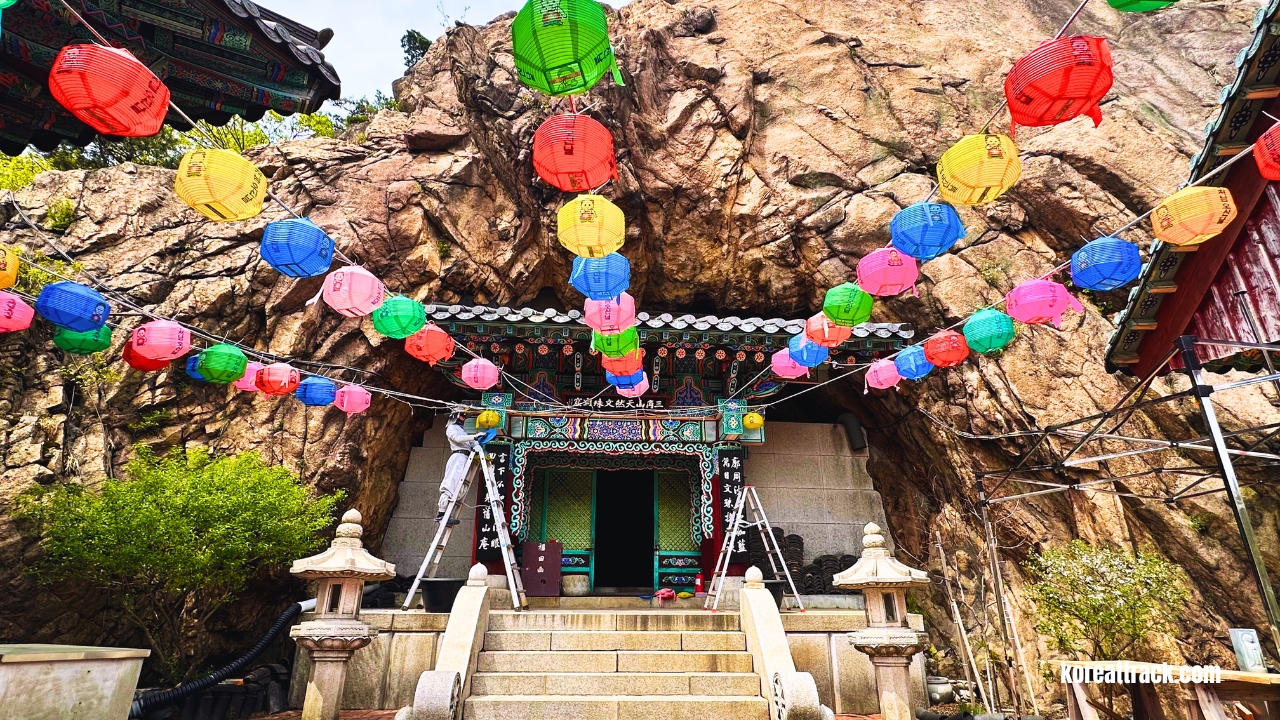 Cave Prayer Hall at Munsusa Temple in Bukhansan National Park
Cave Prayer Hall at Munsusa Temple in Bukhansan National ParkMunsusa Temple in Bukhansan National Park
Munsusa Temple, nestled within the majestic Bukhansan National Park in Seoul, South Korea, is a serene and historic site.
I have been hiking Bukhansan several times since I first came to Korea, but this is the first time I have explored Munsusa Temple.
I came with friends to reach Daenammun ('The Great South Gate'), a more accessible hiking trail with no complex barriers, and did not expect to see this serene temple area.
In this article, I will share fascinating details about this temple and describe Bukhansan National Park's hiking trails.
Brief Background
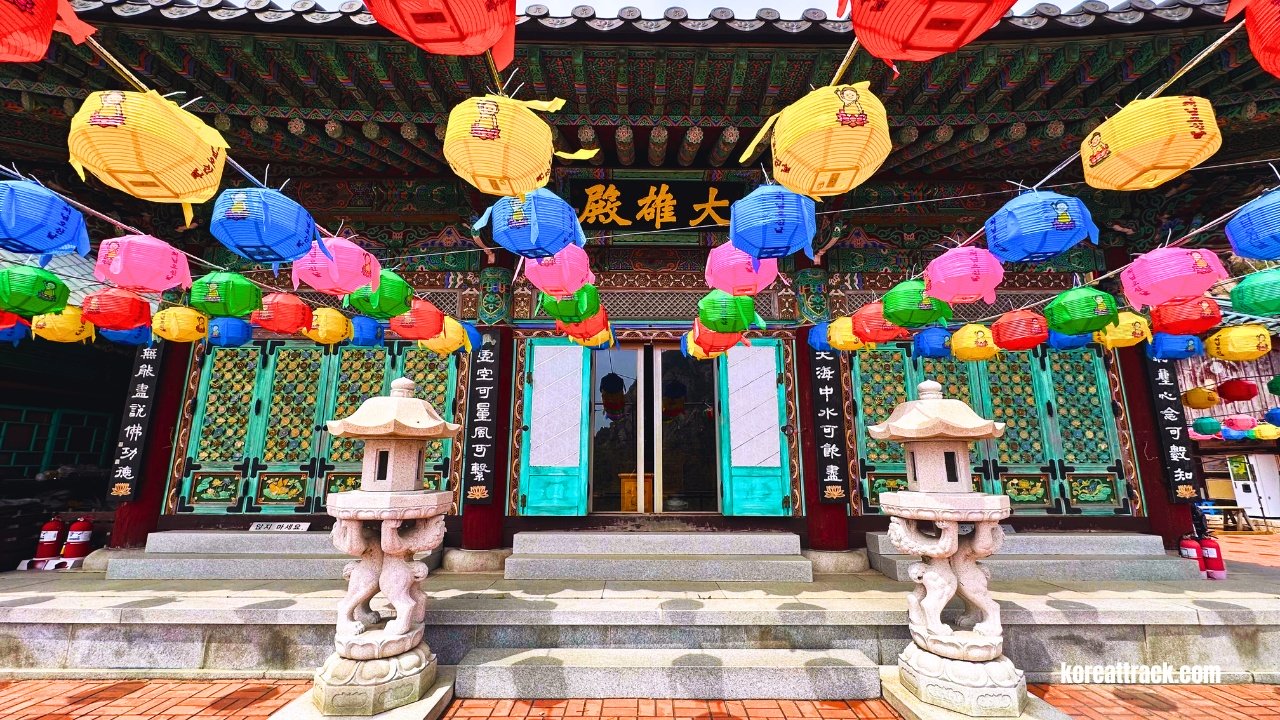 Frontal view of Daeungjeon (main Dharma Hall) of Munsusa Temple in Bukhansan National Park
Frontal view of Daeungjeon (main Dharma Hall) of Munsusa Temple in Bukhansan National ParkMunsusa Temple, situated at 304 Bibong 2-gil, Jongno-gu, Seoul, South Korea, is a serene and captivating place with a fascinating history dating back to 1109.
Munsusa was founded by Priest Tanyeon, who was spellbound by the scenic beauty of the location.
Over the years, the temple has undergone several transformations, the most significant being the rebuilding of its structures in 1451 under the patronage of King Munjong's daughter.
However, no records were kept of it until 1921, when two shrines, Samseonggak Hall and Obaek Nahanjeon Hall, were reconstructed, only to be destroyed during the Korean War in 1950-1953.
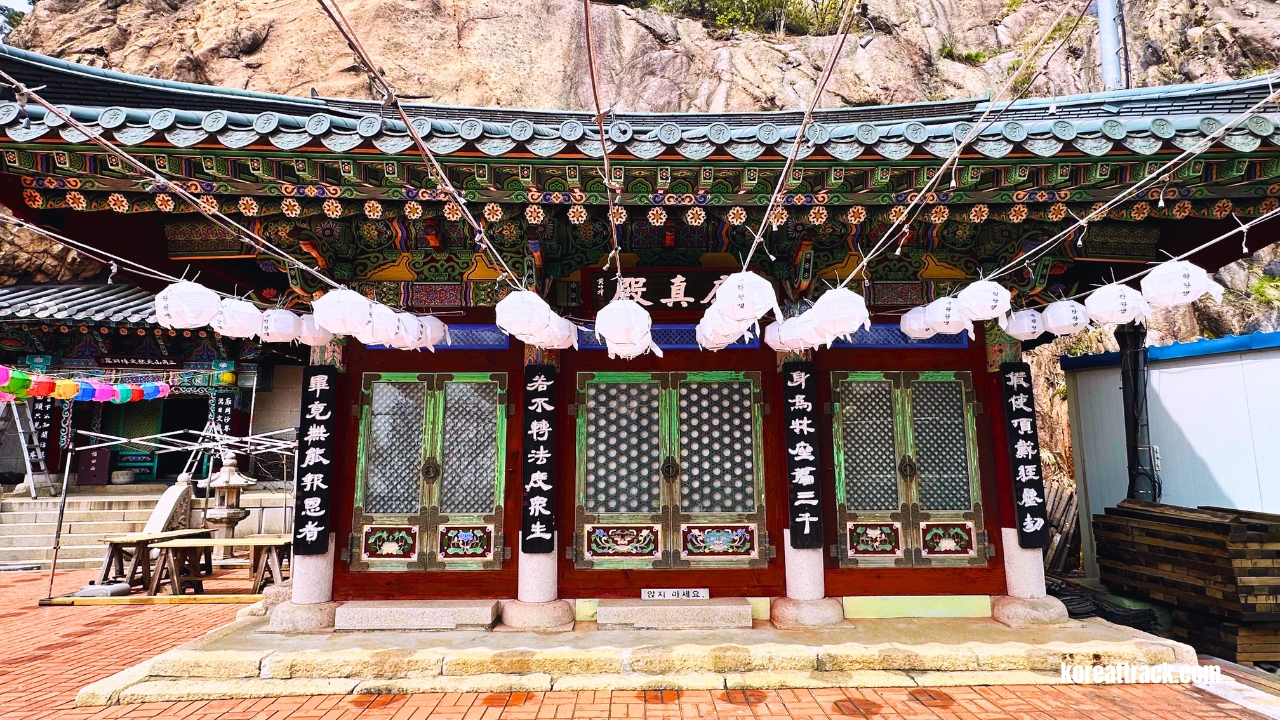 Eungjinjeon (prayer hall-frontview) Munsusa Temple at Bukhansan National Park
Eungjinjeon (prayer hall-frontview) Munsusa Temple at Bukhansan National Park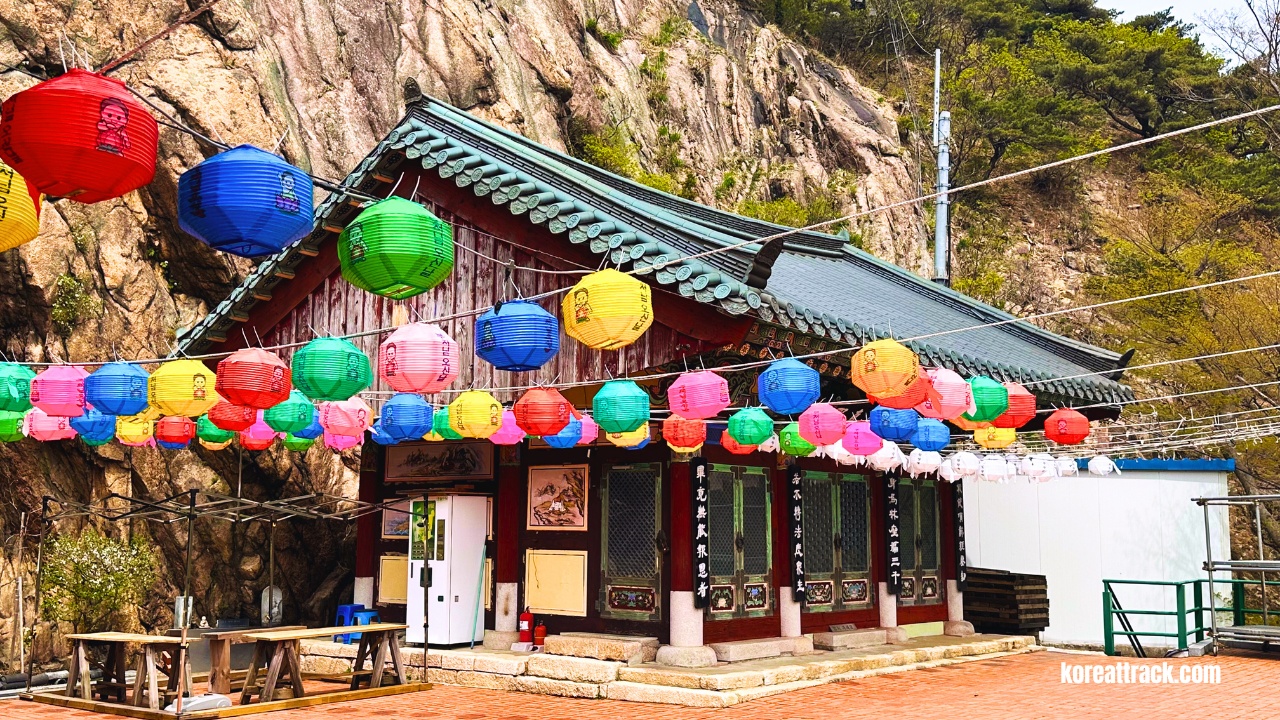 Eungjinjeon (prayer hall) Munsusa Temple at Bukhansan National Park
Eungjinjeon (prayer hall) Munsusa Temple at Bukhansan National ParkDespite the destruction, the temple rose again like a phoenix from the ashes in 1957 and had new shrines constructed for the Three Deities and Five Hundred Arhats in 1983.
The two main prayer halls, Daeungjeon and Eungjinjeon, were erected in 2002, completing the temple's magnificent architecture.
Interestingly, the temple is also known for its association with Syngman Rhee, the first president of the Republic of Korea, who was believed to have been born after his mother prayed for a son at this temple.
The temple's premises even hold a hanging plaque written by Rhee's own hand, making it an even more special place to visit.
Historical Significance
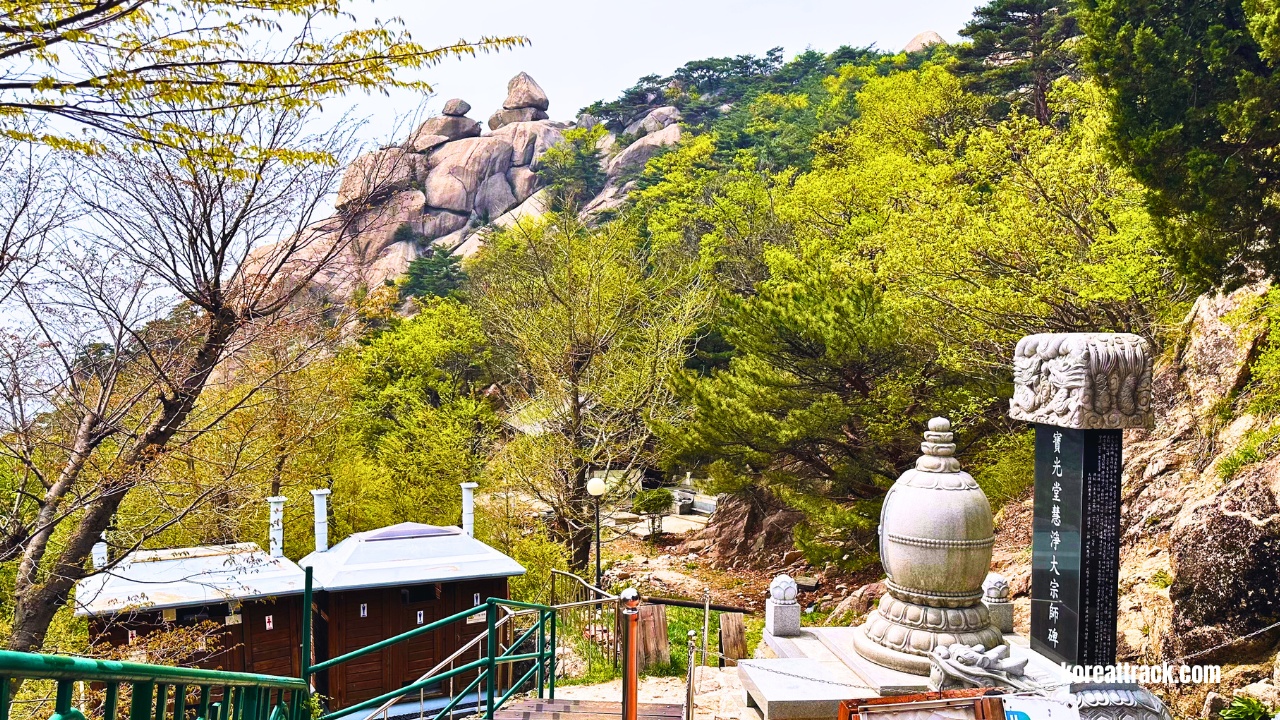 A tombstone and Steele in Munsusa Temple at Bukhansan National Park
A tombstone and Steele in Munsusa Temple at Bukhansan National ParkMunsusa Temple in Bukhansan National Park, Seoul, South Korea, has a rich history that spans over 600 years.
The temple holds great historical significance as it was where King Jeongjo of Joseon (r. 1776-1800) prayed for the birth of a male heir.
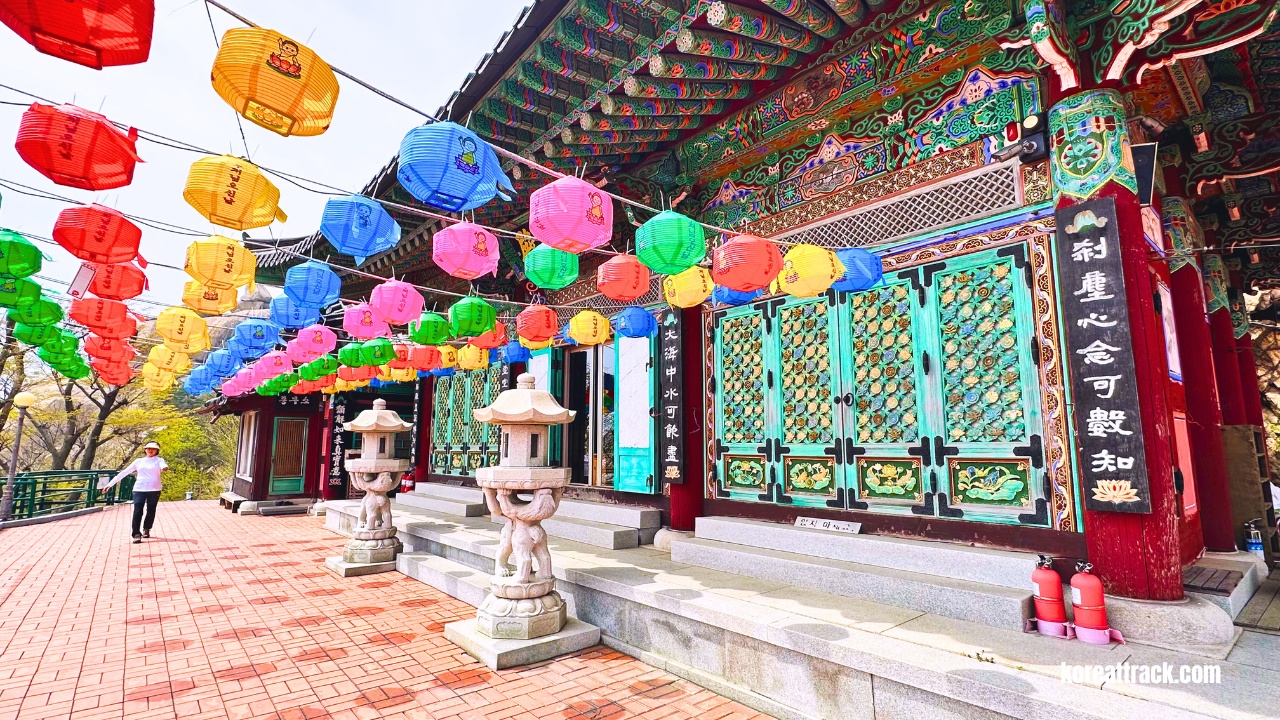 A side view (right) of Munsusa Temple at Bukhansan National Park
A side view (right) of Munsusa Temple at Bukhansan National Park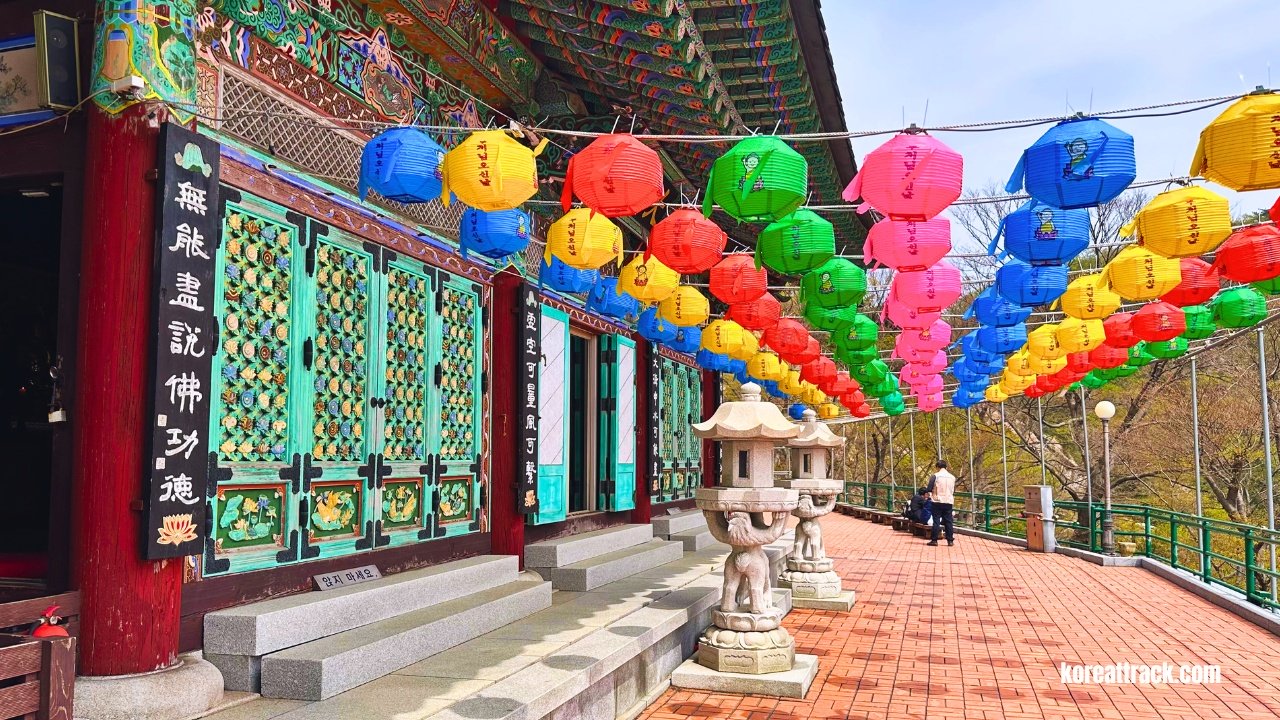 A side view of Munsusa Temple at Bukhansan National Park
A side view of Munsusa Temple at Bukhansan National ParkThe temple is well known for its Seon meditation practice, emphasizing inner contemplation and mindfulness. Seon meditation is a Korean form of Zen Buddhism that focuses on the silent illumination of the mind and the unity of all things.
Munsusa Temple is one of Korea's oldest and most respected Seon meditation temples.
Besides its historical and spiritual significance, Munsusa Temple is known for its stunning natural beauty.
The temple is surrounded by lush forests and a tranquil stream, making it an ideal place for relaxation and contemplation. Hiker visitors can enjoy the peaceful atmosphere and take a break from the hustle and bustle of city life.
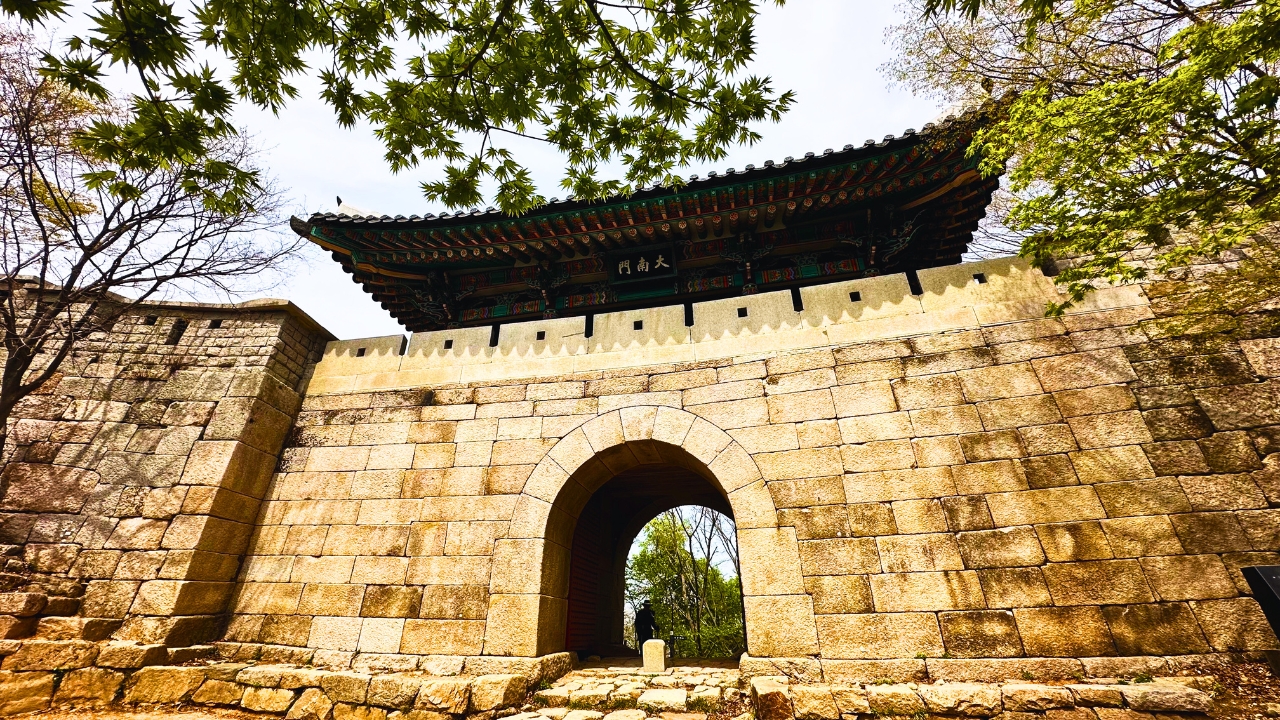 Bukhansan National Park - Daenammun Gate
Bukhansan National Park - Daenammun GateHiking Trails and Peaks
Bukhansan National Park is a paradise for hikers and nature lovers. The park has a vast network of hiking trails catering to different levels of hikers.
Easy, moderate, intermediate, advanced, and expert trails provide diverse hiking experiences.
The easy trails are perfect for beginners as they are less challenging and suitable for families with children.
The moderate and intermediate trails offer more challenging hikes with steep inclines and rocky terrain.
The advanced and expert trails are for experienced hikers seeking a more difficult, adrenaline-filled adventure.
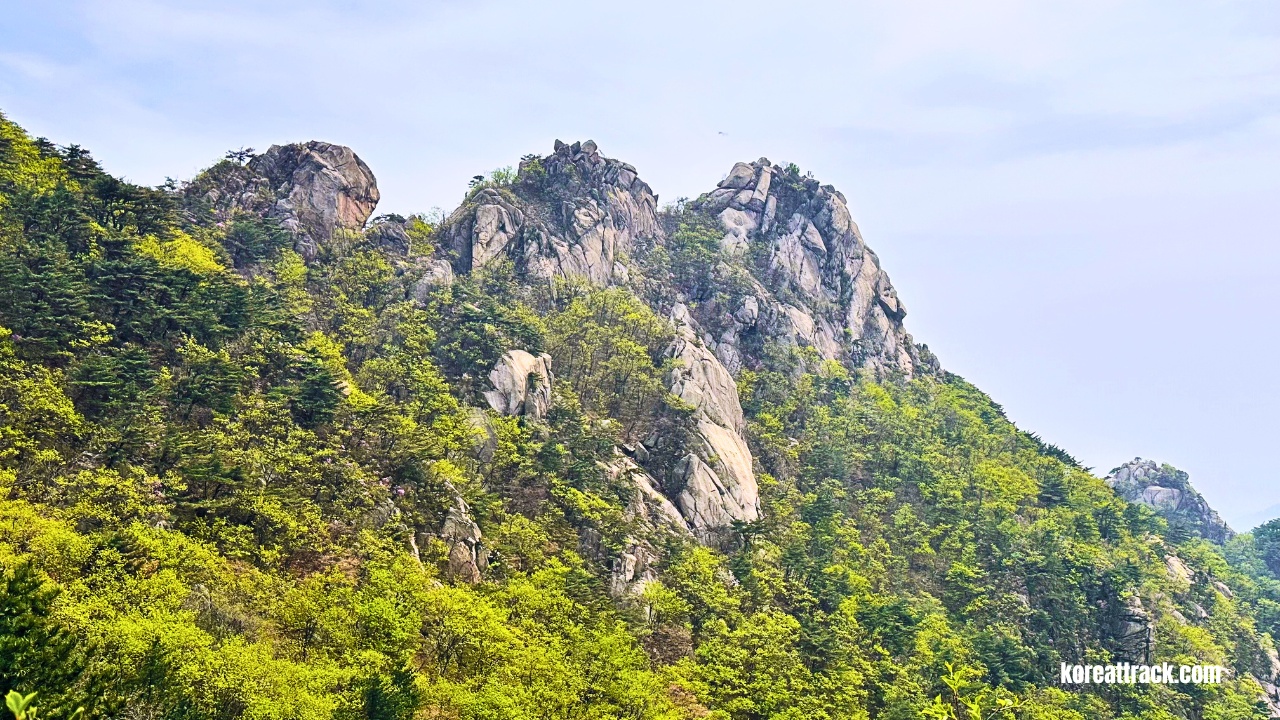 Bukhansan National Park: In this photo, you can see a peak located across from Munsusa Temple.
Bukhansan National Park: In this photo, you can see a peak located across from Munsusa Temple.The park has three prominent peaks that offer stunning panoramic views of the surrounding landscape.
The highest peak is Baegundae Peak, which stands at 836.5m. The peak provides a challenging hike with steep inclines and rocky terrain, but the view from the top makes it worth the effort.
Insubong Peak is the second-highest peak in the park, standing at 810.5m. The peak is famous among rock climbers, and hikers can enjoy a challenging hike.
Mangnyeongdae Peak is the third-highest peak, standing at 799.5m. The peak offers a more relaxed hike, suitable for all levels of hikers.
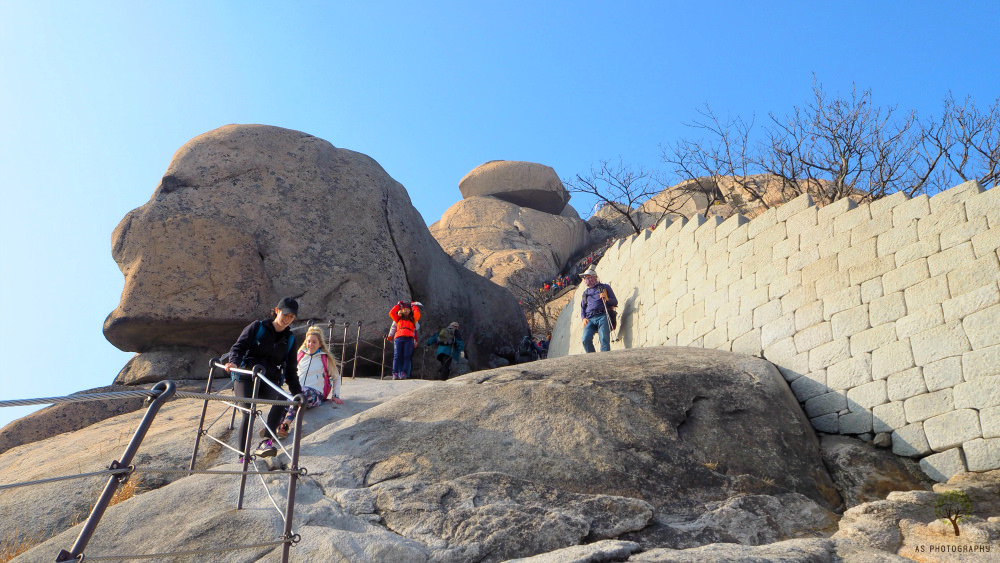 Baegundae Peak of Bukhansan National Park
Baegundae Peak of Bukhansan National ParkNatural Beauty
Bukhansan National Park is renowned for its natural beauty; visitors can enjoy breathtaking scenery.
The park is situated amidst the rugged terrain of Bukhansan, surrounded by lush forests and serene valleys.
The park's trails offer stunning views of the surrounding mountains and valleys, making it a popular destination for nature lovers and photographers.
The park is also home to several temples, including the famous Bukhansanseong Fortress and Hwaumsa Temple, which add to the park's natural beauty.
Record-Breaking Park
Bukhansan National Park is a world-renowned destination, attracting millions of visitors annually.
The park holds a Guinness World Record as the "Most Visited National Park per Unit Area," with approximately five million visitors exploring its trails annually.
The park's popularity is due to its stunning natural beauty, diverse hiking trails, and cultural significance.
The park is an essential part of Seoul's cultural heritage, and it offers visitors a unique opportunity to explore the city's natural beauty and history.
Getting to Munsusa Temple in Bukhansan Park
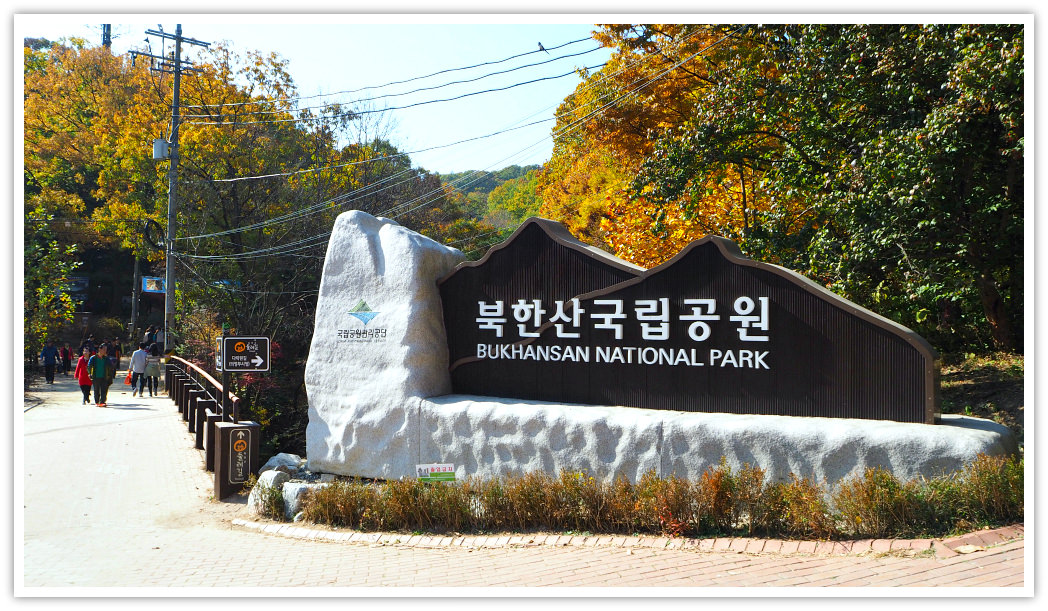 One of Bukhansan National Park's main entrances is where the mountain fortress is located.
One of Bukhansan National Park's main entrances is where the mountain fortress is located.Munsusa Temple in Bukhansan National Park is a beautiful and popular hiking destination in Seoul. There are several ways to access the park, making it convenient for visitors from different parts of the city.
One of the most famous park entrances is the Bukhansanseong Park Information Center. You can take Line 3 of the Seoul Metro to Gupabal Station and exit through Exit 1 to get there.
From there, you can take Bus 34, 704, or 8772 to the Bukhansanseong (Fortress) bus stop, which is right near the park entrance.
Another option is to go to the Jeongneung Park Information Center, accessible from Gireum Station on Line 4. Once you exit through Exit 3, you can take Bus 110B or 143 to the last stop, which is the park entrance.
Finally, you can access the park through the Dobong Park Information Center. This entrance is directly connected to Dobongsan Station, which serves Line 1 and 7 of the Seoul Metro.
Exit through Exit 1, and you'll be at the park entrance.
Wherever you approach Bukhansan, you can expect to reach the park within 30 minutes to 1 hour from central areas like Myeongdong and Seoul Station.
Wear comfortable shoes, carry water, and allow enough time for your return trip. Proper footwear or a pair of mountain hiking shoes is essential for walking on snow and ice in winter.
Enjoy your adventure in this natural oasis right within Seoul! 🌿🏞️
- Home
- Temples in South Korea
- Munsusa Temple In Bukhansan Park
Get Exciting Activities
Book one of our exciting activities today to experience the thrill of a lifetime! Take advantage of this opportunity and secure your spot in advance.
Hotel Map Guide
Find your affordable, accessible, and comfortable hotel in Seoul at Agoda.Com. See the hotel map below...
Hotel Booking Guide
Find affordable and amazing hotels on Agoda.com using the search box below. Book now to enjoy great discounts and save!
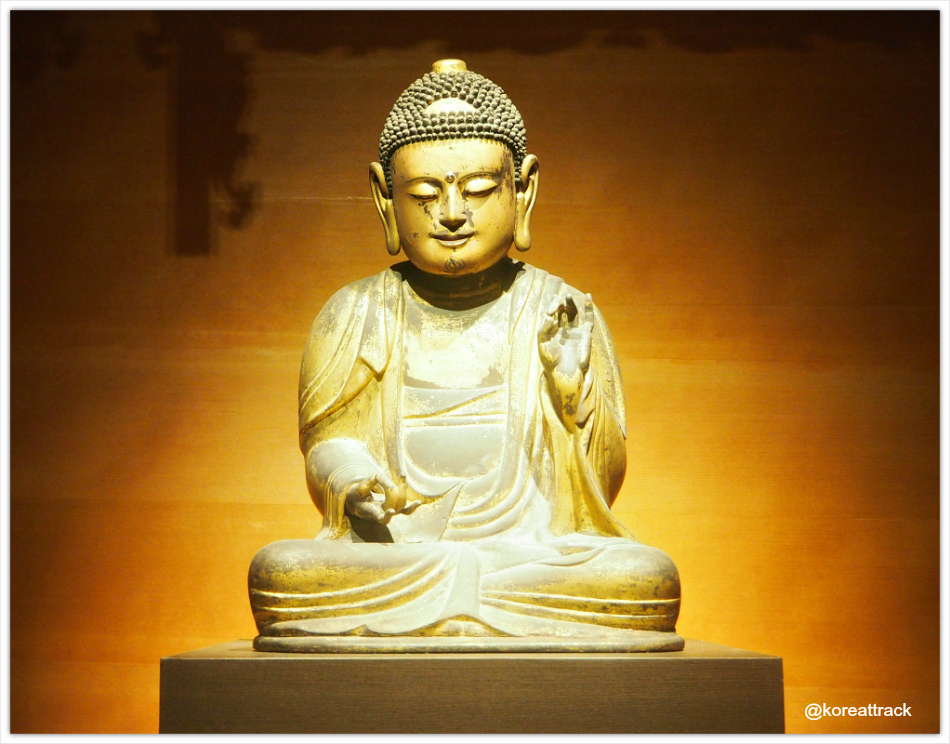
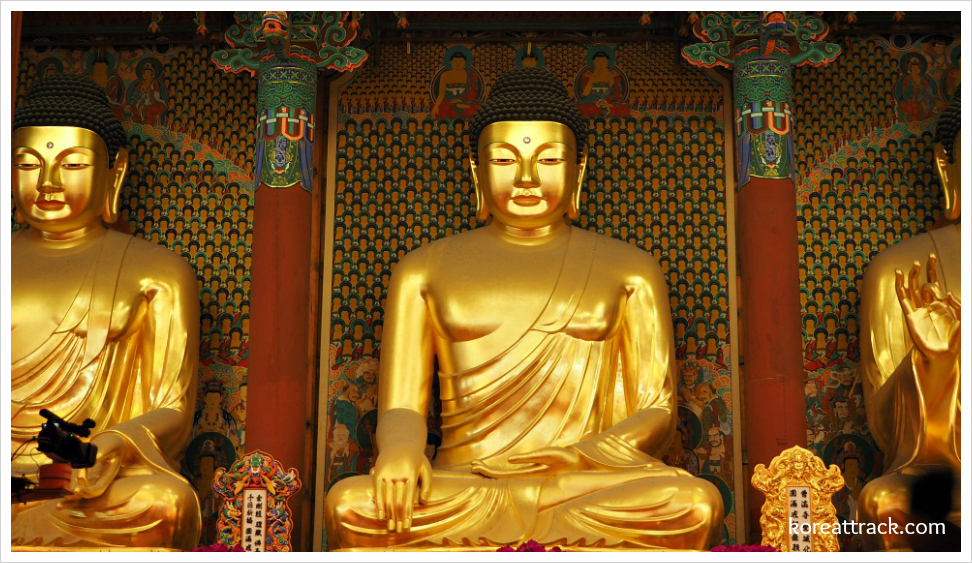
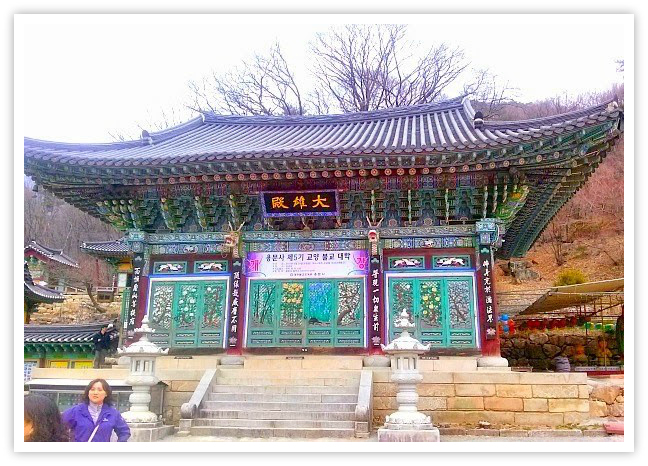




New! Comments
What do you think about this page? Leave me a comment in the box below.